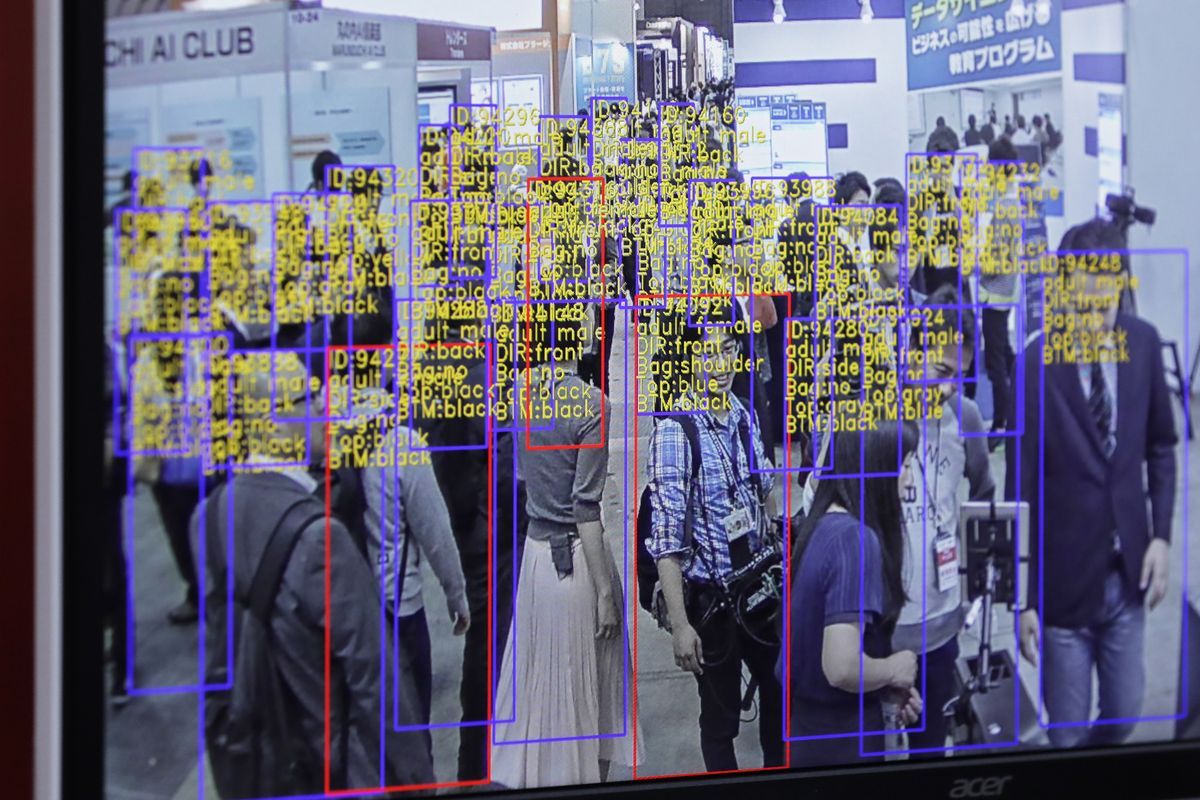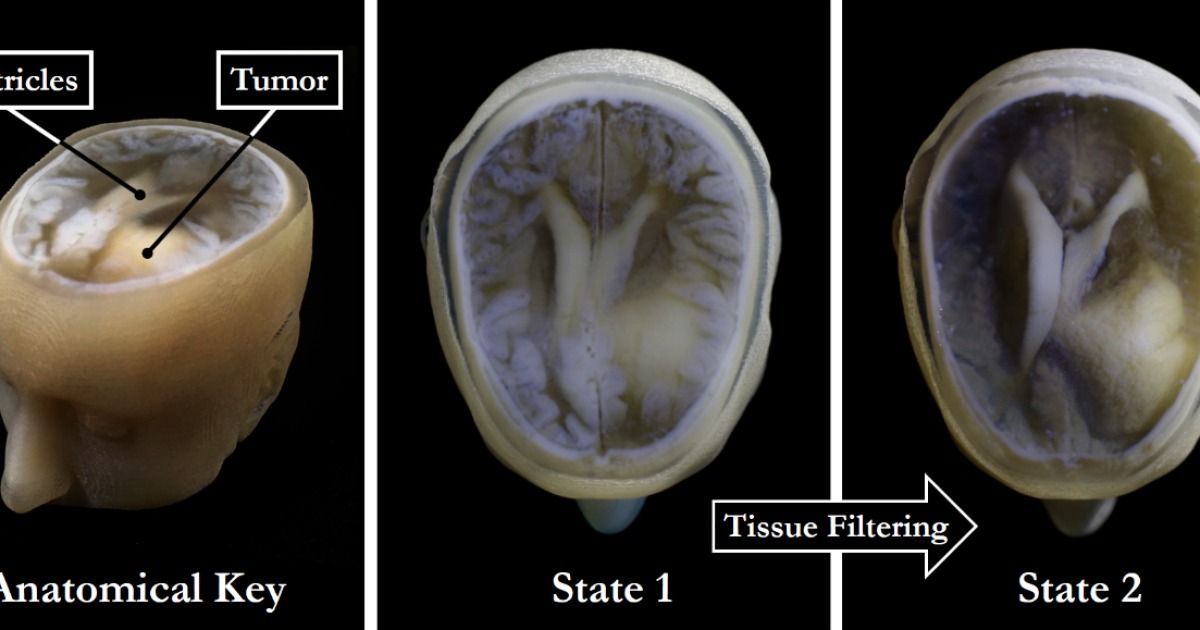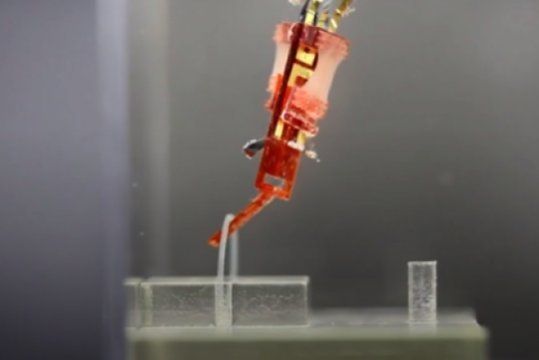Page 10136
May 31, 2018
World’s Biggest AI Startup Raises $1.2 Billion in Mere Months
Posted by Genevieve Klien in category: robotics/AI
SenseTime Group Ltd. has raised $620 million at a valuation of more than $4.5 billion just months after scoring a similar amount from investors led by Alibaba Group Holding Ltd. and Singapore’s state investment firm.
May 31, 2018
You’ll soon be able to get a 3D printed model of your brain
Posted by Marcos Than Esponda in categories: 3D printing, biotech/medical, computing, habitats, neuroscience
https://www.engadget.com/…/3D-printed-brain-medical-imagin…/
There are almost limitless possibilities when it comes to 3D printing. Design your own color-changing jewelry? Fine. Fabricate your own drugs? No problem. Print an entire house in under 24 hours? Sure! Now, researchers have come up with a fast and easy way to print palm-sized models of individual human brains, presumably in a bid to advance scientific endeavours, but also because, well, that’s pretty neat.
In theory, creating a 3D printout of a human brain has been done before, using data from MRI and CT scans. But as MIT graduate Steven Keating found when he wanted to examine his own brain following his surgery to remove a baseball-sized tumour, it’s a slow, cumbersome process that doesn’t reveal any important areas of interest.
Continue reading “You’ll soon be able to get a 3D printed model of your brain” »
May 31, 2018
When I am Eighty-Five
Posted by Alexander Rodionov in categories: biotech/medical, business, life extension
I will be 85 somewhere in the mid 2050s. It seems like a mirage, an impossible thing, but the future eventually arrives regardless of whatever you or I might think about it. We all have a vision of what it is to be 85 today, informed by our interactions with elder family members, if nothing else. People at that age are greatly impacted by aging. They falter, their minds are often slowed. They are physically weak, in need of aid. Perhaps that is why we find it hard to put ourselves into that position; it isn’t a pleasant topic to think about. Four decades out into the future may as well be a science fiction novel, a far away land, a tale told to children, for all the influence it has on our present considerations. There is no weight to it.
When I am 85, there will have been next to no senescent cells in my body for going on thirty years. I bear only a small fraction of the inflammatory burden of older people of past generations. I paid for the products of companies descended from Oisin Biotechnologies and Unity Biotechnology, every few years wiping away the accumulation of senescent cells, each new approach more effective than the last. Eventually, I took one of the permanent gene therapy options, made possible by biochemical discrimination between short-term beneficial senescence and long-term harmful senescence, and then there was little need for ongoing treatments. Artificial DNA machinery floats in every cell, a backup for the normal mechanisms of apoptosis, triggered by lingering senescence.
When I am 85, the senolytic DNA machinery will be far from the only addition to my cells. I underwent a half dozen gene therapies over the years. I picked the most useful of the many more that were available, starting once the price fell into the affordable-but-painful range, after the initial frenzy of high-cost treatments subsided into business as usual. My cholesterol transport system is enhanced to attack atherosclerotic lesions, my muscle maintenance and neurogenesis operate at levels far above what was once a normal range for my age, and my mitochondria are both enhanced in operation and well-protected against damage by additional copies of mitochondrial genes backed up elsewhere in the cell. Some of these additions were rendered moot by later advances in medicine, but they get the job done.
May 31, 2018
Cometh the cyborg: Improved integration of living muscles into robots
Posted by Jacob Anderson in categories: cyborgs, robotics/AI
The new field of biohybrid robotics involves the use of living tissue within robots, rather than just metal and plastic.
Researchers have developed a novel method of growing whole muscles from hydrogel sheets impregnated with myoblasts. They then incorporated these muscles as antagonistic pairs into a biohybrid robot, which successfully performed manipulations of objects. This approach overcame earlier limitations of a short functional life of the muscles and their ability to exert only a weak force, paving the way for more advanced biohybrid robots.
May 31, 2018
Heroes of Innovation: Zoltan Istvan
Posted by Zoltan Istvan in categories: biological, geopolitics, transhumanism
I’ll be speaking at the exciting Future Flux Festival on the Heroes of Innovation program section on June 15 in the Netherlands. Come join me! https://www.futurefluxfestival.nl/…/heroes-of-innovation-z…/ #transhumanism
Transhumanism is the field of merging human beings with machines and radical science. The field has grown from fringe to a nearly mainstream social movement. Today, there are tens of millions of transhumanists around the world, many who are scientists and technologists focusing on overcoming biological death with innovation. The movement got a major push when Zoltan Istvan, a former journalist for National Geographic, published his bestselling philosophical novel The Transhumanist Wager. In 2016 Zoltan ran for the Presidency of the United States as the nominee of the Transhumanist Party. His campaign was broadly covered in major media for nearly two years, and it helped spearhead the transformation of transhumanism into a thriving worldwide phenomenon. Always wanted to know more about transhumanism? See you at the Future Flux Festival!
Zoltan Istvan is also part of our Heroes of Innovation panel. After their presentations you can ask our panel anything. Take a deep dive into the minds of these great innovators!
May 31, 2018
“Antipodes Map — Tunnel to the other side of the world”
Posted by Manuel Canovas Lechuga in category: futurism
Antípodas.
Antipodes map helps you find the other side of the world, the antipodes of any place on Earth. This map shows diametrically opposite location named antipode or antipodal point.
May 31, 2018
Chronic Supplementation With a Mitochondrial Antioxidant (MitoQ) Improves Vascular Function in Healthy Older Adults
Posted by Steve Hill in categories: biotech/medical, life extension
Earlier this month, there was a human clinical trial of the supplement MitoQ, which showed some interesting results. We thought that we would take a look at the data, and discuss the findings.
Excess reactive oxygen species production by mitochondria is a key mechanism of age-related vascular dysfunction. Our laboratory has shown that supplementation with the mitochondrial-targeted antioxidant MitoQ improves vascular endothelial function by reducing mitochondrial reactive oxygen species and ameliorates arterial stiffening in old mice, but the effects in humans are unknown. Here, we sought to translate our preclinical findings to humans and determine the safety and efficacy of MitoQ. Twenty healthy older adults (60–79 years) with impaired endothelial function (brachial artery flow–mediated dilation 6%) underwent 6 weeks of oral supplementation with MitoQ (20 mg/d) or placebo in a randomized, placebo-controlled, double-blind, crossover design study.
May 31, 2018
Pig brains kept alive without a body
Posted by Narenda Har in categories: innovation, neuroscience
A new wonderful breakthrough of our time.
Scientists raise ethical concerns as the brain cells of decapitated pigs are kept alive for 36 hours.















